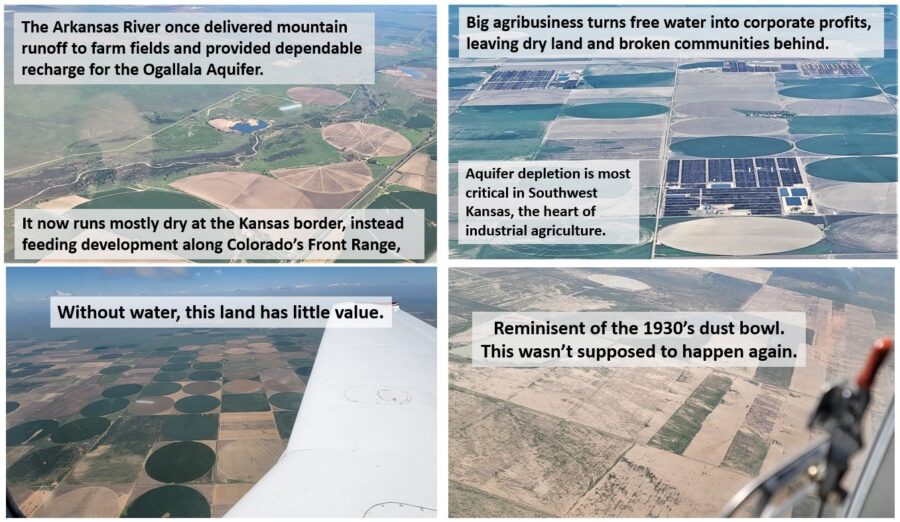The first settlers came upon a vast grassland teaming with ruminant animals and wildlife. Rivers flowed from the mountain peaks to the west, bringing precious water and life to the prairie land, and filling one of the largest, and what has become one of the most important underground sources of water in the world – The Ogallala Aquifer.
Today, the Ogallala Aquifer is being mined far beyond its recharge rate by some of the largest and most predatory corporations in the world, filling their bank accounts, rewarding their shareholders, and leaving us with dry wells, broken communities, and blowing dirt.

The picture is too clear on this 29th day of May, 2023 – From the center of the Ogallala Aquifer at Garden City, Kansas, to the edge of the Aquifer west of Lamar, the land is suffering from poor stewardship and abusive extraction of resources.
From Kansas to Hope, Arizona, to California, why are we squandering this most precious resource?
Also see:
Salt, Water, and Soil – When it’s gone, they leave
Industrial Agriculture and Urban Sprawl – A Model of growth that’s made to fail.
The Current State of U.S. Agriculture and Food Infrastructure, and Solutions
VICE: Meathooked and End of Water













If only we could see the disappearing aquifer, like the shocking satellite images of lakes Powell and Mead, perhaps we would take stronger measures to preserve it.: https://www.hpj.com/opinion/conserving-water-has-to-be-long-term-policy/article_cfd98408-f8b9-11ed-85f8-e37914a6f5bf.html
Agreed. I read an article back in 2019 on Zero Hedge, where it said that the Frahm “family farm” near Colby used 1 billion gallons of water to irrigate their crops every year. I know some people think because Kansas won the legal battle over the water compact that everything will be fine, but if this amount of irrigation continues, there may not be enough water left no matter how much the Sunflower State gets from Colorado.
Exactly!